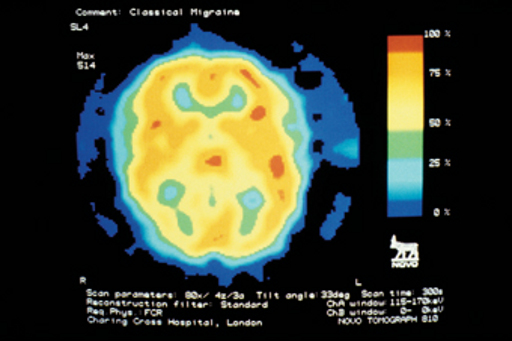Headline headaches
In OTC
Follow this topic
Bookmark
Record learning outcomes
Neurostimulation is proving to be an exciting development in the treatment of migraines Â
With everyday analgesics under scrutiny, what treatment options can patients consider for managing headaches and migraine?Â
 Popular analgesics are having a bit of a rough time at the moment. Paracetamol has hit the headlines a number of times over the past few months – not necessarily in connection with headaches, but enough to make patients think about their analgesic choices.
Popular analgesics are having a bit of a rough time at the moment. Paracetamol has hit the headlines a number of times over the past few months – not necessarily in connection with headaches, but enough to make patients think about their analgesic choices.
Negative publicity has included articles on paracetamol’s ineffectiveness in lower back pain, its blunting effect on emotional sensitivity, a possible effect on testosterone levels in male foetuses if taken at sustained levels by pregnant mums, and a BMJ article entitled, ‘Paracetamol – not as safe as we thought?’.
And it’s not just paracetamol. High dose ibuprofen has also come under scrutiny in Europe, as there is a slight increased risk of cardiovascular problems at maximal prescription dosing. So what advice can you offer your customers when they ask about headaches or migraine treatments? Well, those recent studies may have caused headlines, but they have not (as yet) changed the guidelines, especially at over-the-counter dosages.
NICE updated its clinical ‘pathway’ on the management of headaches and migraine, with or without aura, in April 2015, and analgesics remain as treatment options. However, before it discusses medication, it urges health professionals to discuss headache management options with the patient, and provide information about headache disorders and support organisations.
Pharmacists should also explain the risk of medication overuse headache to people who are using acute treatments for their headache disorder. Patients may also benefit from using a headache diary.
Medicines do matter
Â
When it comes to medicines, the first approach includes aspirin, paracetamol or an NSAID (but not codeine) for tension-type headaches, taking into account the patient’s preference, co-morbidities and risks of adverse events. Cluster headaches need more specialist diagnosis, perhaps by a GP with a special interest in headache or a neurologist, says the pathway. In acute migraine in adults, initial drug therapy could be an oral triptan in combination therapy with an NSAID or paracetamol, although monotherapy is also suggested.
Omega Pharma, which includes Solpadeine it its portfolio, says pharmacy teams can continue to follow the OTC pain pathway by recommending either paracetamol or NSAID products as the first line treatment for headache and migraine. For pain that is not relieved with a single active ingredient alone, pharmacists should suggest a combination painkiller product.
“Pharmacists and counter staff should also encourage responsible use of codeine-based products for short-term pain, and direct customers to the product information leaflet for information on the recommended dose,†says a Solpadeine spokesperson. “Finally, it is important to offer a broad choice of pain relief options in a variety of forms to cater to the individual needs of pain customers.â€
Solpadeine training modules on Omega Pharma’s newly updated training portal (www.omegapharmatraining.co.uk) cover topics such as the OTC pain pathway, recommending the right treatment for different types of pain, and when to refer customers to their GP. “Easy to navigate, these modules are accompanied by a real-time reporting system that enables users to track their progress and record all of their achievements in one place,†says Omega. “The portal allows users to upload all certificates electronically, so they can keep track of all their training and give their pharmacy manager the ability to review their progress.â€
Â
Innovation in migraine
Â
 Innovative approaches to migraine management might include flunarizine, a calcium channel blocker not yet unlicensed in the UK but licensed in other countries, including Ireland, for the prophylaxis of migraine in adults. NICE has not recommended the drug, but has set out advice in ESUOM 33 (Evidence summary: unlicensed and off-label medicines). “Overall, the studies included in this evidence summary suggest that flunarizine is as effective as propranolol or topiramate at reducing the frequency of migraines in adults. In children, flunarizine was more effective than placebo at reducing migraine frequency, and as effective as nimodipine, aspirin, propranolol or dihydroergotamine,†says NICE.
Other approaches to consider might be dietary. Dr David Mantle, medical adviser at Pharma Nord, suggests a role for the antioxidant coenzyme Q10 in migraine. “CoQ10 is particularly important for the normal functioning of mitochondria, the specialised structures within cells responsible for energy generation,†he says.
“There is evidence that migraines are associated with mitochondrial dysfunction, and deficiency of CoQ10. Several clinical studies have demonstrated that supplementation with CoQ10 significantly reduces the frequency of migraine attacks, and associated vomiting. Based on their review of efficacy, CoQ10 received a strong recommendation as a prophylactic drug from the Canadian Headache Society.â€
Indeed, in the UK, the Migraine Trust lists CoQ10, describing one study in which “CoQ10 appears to be a good migraine preventive.†Both the Migraine Trust and PharmaNord websites carry a list of referenced research articles on supplements and migraine.
A role for technology
Â
Another option to consider is a non-invasive electronic device, Cefaly. It was launched into the UK in 2014, and in America the US Food and Drug Administration (FDA) has approved it as a medical device for migraines.
BHR Pharmaceuticals, Cefaly’s UK supplier and distributor, says: “Electrical devices like Cefaly are becoming a popular, successful and alternative way to treat migraine, and healthcare professionals now see that they have a role to play as an alternative to drugs or needles as used with Botox or nerve blocks.â€
The device is worn as a small headband which applies precise neurostimulation via electrical impulses at the centre of the forehead onto the supraorbital nerve, a nerve which has been implicated in migraine activity. Patients wear the device for twenty minutes daily as a preventative measure and it can also be used at the start of a migraine to help to relieve symptoms.
In a double blind, randomised, sham controlled study carried out on 67 patients across five centres in Belgium, 38 per cent of patients who used Cefaly reported at least a 50 per cent reduction in their migraine frequency and a 37 per cent reduction in the amount of medication that they took each month. A satisfaction survey of 2,313 purchasers of the device also found that 55 per cent were satisfied enough to purchase the device after a trial period.
A stimulating concept
Â
Wendy Thomas, of the charity The Migraine Trust, comments: “Neurostimulation is proving to be an exciting development in the treatment of migraines and the research on the efficacy of Cefaly is so far positive. We welcome new studies and any treatment which can add to the range of options available for the many numbers of people whose lives are blighted by migraine.â€
Cefaly can be purchased via its website, www.cefaly.co.uk and BHR can provide training and support on the product as well as patient information leaflets for pharmacies. BHR has a proposal whereby the pharmacist can offer the device through BHR and provide a margin to the pharmacist; this way they do not have to hold stock. A full six-week refund is also available.
And as there is now an app for everything, the Migraine Trust has been working with digital health experts Health Fabric to develop a free mobile application called MyHealthFabric.
Users can download health and wellbeing plans onto their mobile device, which can be anything from clinical instructions for patients to health and fitness programmes for leading a healthier lifestyle. The Migraine Trust has helped create a number of migraine plans.
“Those using the MyHealthFabric app can then personalise any plan they have downloaded to manage any aspect of their health, medication and wellbeing targets. They can set reminders for medications and appointments, record healthcare measurements, compare their health stats in line with public health guidelines, and track their progress with reports.â€
Suggested reading
Â
Â
References
Â
European Medicines Agency. Updated advice on use of high-dose ibuprofen. 22/5/2015

